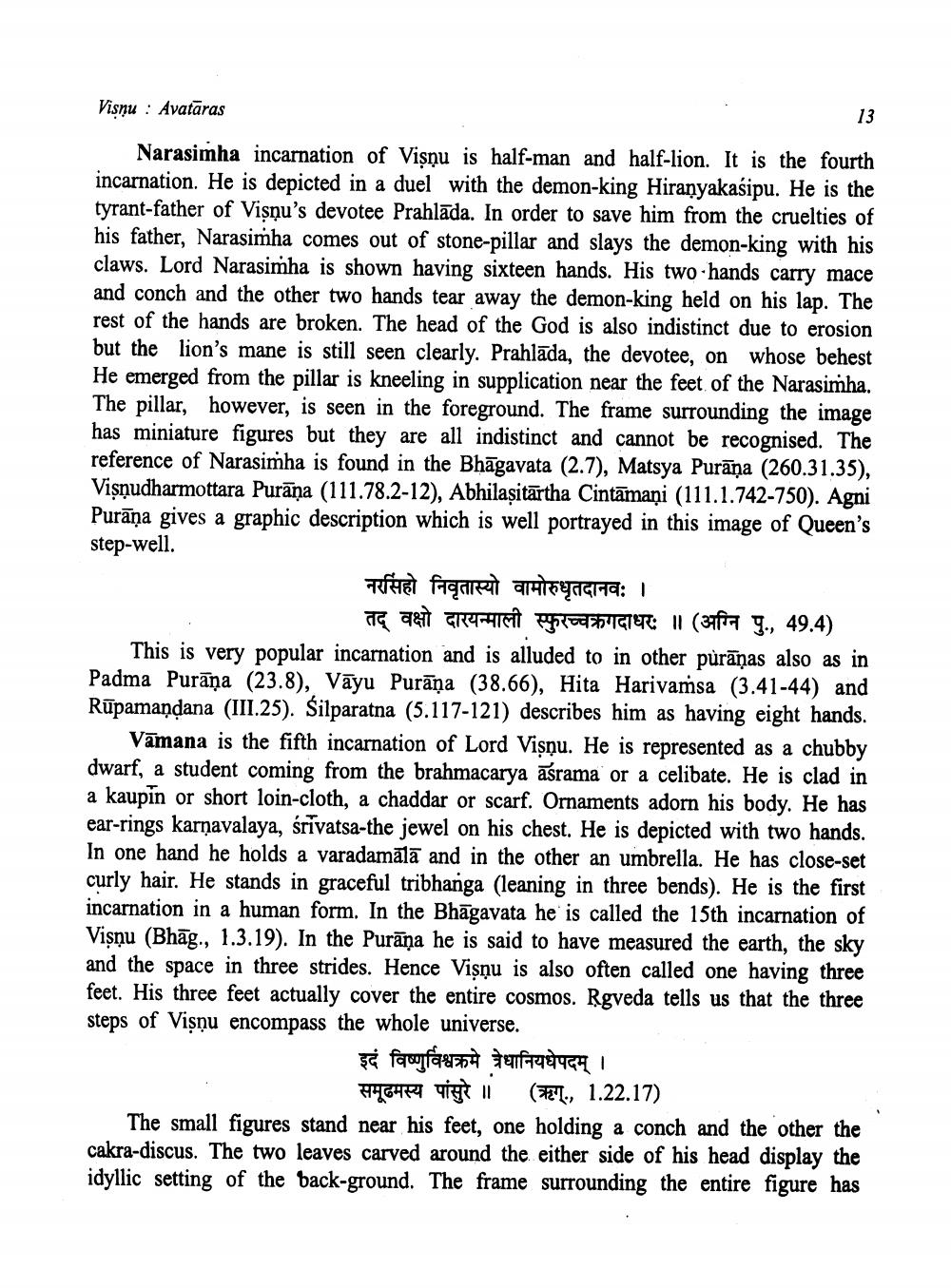________________
Visņu : Avatāras
13
Narasimha incarnation of Visnu is half-man and half-lion. It is the fourth incarnation. He is depicted in a duel with the demon-king Hiranyakaśipu. He is the tyrant-father of Vişņu's devotee Prahlāda. In order to save him from the cruelties of his father, Narasimha comes out of stone-pillar and slays the demon-king with his claws. Lord Narasimha is shown having sixteen hands. His two-hands carry mace and conch and the other two hands tear away the demon-king held on his lap. The rest of the hands are broken. The head of the God is also indistinct due to erosion but the lion's mane is still seen clearly. Prahlāda, the devotee, on whose behest He emerged from the pillar is kneeling in supplication near the feet of the Narasimha. The pillar, however, is seen in the foreground. The frame surrounding the image has miniature figures but they are all indistinct and cannot be recognised. The reference of Narasimha is found in the Bhāgavata (2.7), Matsya Purāņa (260.31.35), Vişnudharmottara Purāņa (111.78.2-12), Abhilaşitārtha Cintamani (111.1.742-750). Agni Purāņa gives a graphic description which is well portrayed in this image of Queen's step-well.
नरसिंहो निवृतास्यो वामोरुधृतदानवः ।
TG aet crear l'IGTETE II (safra y., 49.4) This is very popular incarnation and is alluded to in other purāṇas also as in Padma Purāņa (23.8), Vāyu Purāņa (38.66), Hita Harivamsa (3.41-44) and Rūpamaņdana (III.25). Śilparatna (5.117-121) describes him as having eight hands.
Vāmana is the fifth incarnation of Lord Visņu. He is represented as a chubby dwarf, a student coming from the brahmacarya asrama or a celibate. He is clad in a kaupin or short loin-cloth, a chaddar or scarf. Ornaments adorn his body. He has ear-rings karnavalaya, srivatsa-the jewel on his chest. He is depicted with two hands. In one hand he holds a varadamālā and in the other an umbrella. He has close-set curly hair. He stands in graceful tribhanga (leaning in three bends). He is the first incarnation in a human form. In the Bhāgavata he is called the 15th incarnation of Vişņu (Bhāg., 1.3.19). In the Purāņa he is said to have measured the earth, the sky and the space in three strides. Hence Vişņu is also often called one having three feet. His three feet actually cover the entire cosmos. Rgveda tells us that the three steps of Visnu encompass the whole universe.
इदं विष्णुर्विश्वक्रमे त्रेधानियधेपदम् ।
Hughes might II (FL., 1.22.17) The small figures stand near his feet, one holding a conch and the other the cakra-discus. The two leaves carved around the either side of his head display the idyllic setting of the back-ground. The frame surrounding the entire figure has




